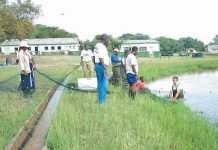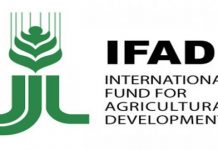[ad_1]
Click for enlarged image
One of the most serious pathogen groups causing devastating effects to cultured species in aquaculture are bacterial pathogens. However, not so much attention is given to this group because they rarely act as primary pathogens but rather most commonly as opportunistic pathogens on already damaged or severely immunocompromised hosts and there are treatment regimens available.
The third WriteShop related to a publication Responsible Management of Bacterial Diseases in Aquaculture was held in Putrajaya from 3-5 August 2017. This publication will provide the impetus to the anticipated actions that governments are taking particularly in the development of National Action Plans (NAP) on Antimicrobial Resistance (AMR) – one of the strategies that underpins any intervention that will lead to reducing the development of AMR. It is essential to understand bacteria – they are the oldest life form on earth. They have survived 4 billion years because they have a remarkable ability to adapt to changes in their environment and since they are protean – they are mutable, flexible, versatile, adaptable and capable of adopting many forms. A good understanding as to how bacteria cause disease provides opportunities to manage the host, and use alternative treatments as well as effectively target key virulence factors for vaccines.
Some 38 pathogens belonging to six gram-negative and four gram-positive bacteria were considered as causing major bacterial diseases of cultured finfish, crustaceans and molluscs in fresh and marine waters. The selection of bacterial pathogens were based on a set of criteria developed by the experts, namely: (1) economic importance of affected species (2) socio-economic impact (3) zoonotic potential.
Important lessons in the past on the use of antibiotics to treat bacteria include essential considerations such as, e.g.: treatment should be based on correct diagnosis (i.e. antibiotics will work only against bacterial diseases); use antibiotics only when it is necessary, prudent and rational; antibiotic use should be used effectively and efficiently and be administered by a recognized professional; absence of susceptibility testing for the target bacterium is not good practice, imprudent and a waste of resources. Development of educational materials on prudent use, technical support for industry and aquatic animal health professionals and other stakeholders – is an urgent priority. It is hoped that this publication will serve this purpose.
[ad_2]
Source link




